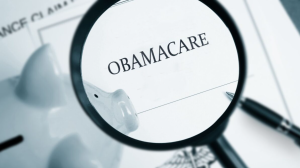Trump Outlines Tariff Dividend Proposal
President Donald Trump has provided new details on a potential tariff dividend for Americans, clarifying who would be eligible for the payments and who would not. The plan, which has been floated throughout 2025, is intended to distribute revenues collected from tariffs imposed by the federal government.
According to Trump, the proposed dividend would provide at least $2,000 per person, with a key caveat: high-income individuals would be excluded from receiving the payments. The president shared the update on Truth Social on November 9, emphasizing the benefits of tariffs and criticizing opponents of the policy.
“A dividend of at least $2,000 a person (not including high-income people!) will be paid to everyone,” Trump wrote. “People that are against Tariffs are FOOLS!”
While the concept of a tariff dividend has been discussed in broader political circles — including by Missouri Senator Josh Hawley — Trump’s clarification marks the first time his administration has explicitly outlined income-based exclusions.
How the Tariff Dividend Would Work
A dividend, in general, is a distribution of profits to shareholders. In this case, Trump has framed U.S. citizens as shareholders in the federal government’s tariff revenue. The money would come from the $195 billion in tariff duties collected by the Treasury so far in 2025, according to official figures.
The mechanics of how the dividend would be distributed remain unclear. Observers note that, even if the funds are available, Congressional approval may be required before checks can be sent to citizens. The government is currently in the midst of the longest shutdown in U.S. history, tied to financial disputes over the Affordable Care Act. This complicates the process and raises questions about how soon any payments could actually reach the public.
Political and Legal Considerations
Trump has defended the legality of his tariff program, citing the International Emergency Economic Powers Act (IEEPA). Supporters argue that the president has the authority to impose tariffs and manage the revenue. Critics, however, question whether the proposed dividend aligns with federal law, and whether Congress must approve such disbursements.
Senator Hawley previously suggested a similar idea, proposing a $600 rebate for nearly every American and their dependent children. Trump’s plan, by comparison, is larger in dollar terms but still excludes high-income earners.
The legal scrutiny of tariffs could influence the timing and scale of any payments. Experts warn that the government shutdown adds additional hurdles, as many federal employees are furloughed or working without pay, and key administrative processes are slowed.
Economic Implications
Trump has framed the tariff revenues as a tool not only for dividends but also for reducing the national debt. On Truth Social, he emphasized that revenue from tariffs “will soon begin paying down our ENORMOUS DEBT” and described the funds as a positive development for the country.
Economists caution, however, that tariff revenues can be volatile and may be offset by increased costs to consumers or retaliatory measures from trade partners. While a $2,000 dividend per eligible American could provide immediate relief to households, long-term economic effects of tariffs remain debated.
Public Response and Expectations
The proposal has drawn attention both from the public and political commentators. Many Americans, particularly those affected by the shutdown or struggling with rising living costs, would welcome a direct cash payment.
At the same time, observers note that high-income individuals are excluded, leaving some groups out of the potential benefit. The president’s critics argue that the plan is politically motivated, aimed at appealing to middle- and lower-income voters ahead of upcoming elections.
The mechanics of distribution, including whether checks would be issued automatically or through a claims process, have not yet been explained. Analysts also emphasize that Congressional approval and potential legal challenges could delay or alter the plan.
The Broader Context of Tariffs
Trump’s tariff strategy has been controversial on the global stage, affecting trade relationships and prompting criticism from foreign leaders. Supporters argue that tariffs protect American industries and generate revenue that can be redirected domestically. Critics counter that tariffs can increase costs for U.S. consumers, disrupt supply chains, and provoke retaliatory measures from trade partners.
The idea of a tariff dividend seeks to turn collected revenue directly into payments to citizens, effectively sharing the gains from trade policy. While politically appealing, the concept raises questions about implementation, legality, and economic impact.
What Comes Next
The next steps for the tariff dividend plan are uncertain. Congress may need to authorize distribution, particularly in light of ongoing legal and financial scrutiny. The government shutdown, which has caused furloughs and delayed services, adds another layer of complexity.
Trump’s posts on Truth Social have also placed the onus on Democrats, whom he blames for the impasse, arguing that the delay prevents Americans from receiving much-needed payments. Many citizens are navigating furloughs, unpaid work, and reliance on food assistance, making the potential dividend an especially sensitive political issue.
Analysts suggest that public reaction may influence legislative action, particularly as lawmakers consider the economic and political consequences of direct payments funded by tariffs.
Conclusion
Trump’s clarification of the tariff dividend — specifying a $2,000 payment for most Americans, excluding high-income earners — brings new attention to a policy concept that has been discussed in general terms for months.
Whether the payments will be implemented depends on several factors: congressional approval, legal review of the tariffs, and the ongoing government shutdown. In the meantime, the proposal underscores the ongoing debate about how best to use tariff revenues and support citizens, particularly amid economic uncertainty.

James Jenkins is a celebrated Pulitzer Prize-winning author whose work has reshaped the way readers think about social justice and human rights in America. Raised in Atlanta, Georgia, James grew up in a community that instilled in him both resilience and a strong sense of responsibility toward others. After studying political science and creative writing at Howard University, he worked as a journalist covering civil rights issues before dedicating himself fully to fiction. His novels are known for their sharp, empathetic portraits of marginalized communities and for weaving personal stories with broader political realities. Jenkins’s breakout novel, Shadows of Freedom, won national acclaim for its unflinching look at systemic inequality, while his more recent works explore themes of identity, resilience, and the fight for dignity in the face of oppression. Beyond his novels, James is an active public speaker, lecturing at universities and participating in nonprofit initiatives that support literacy and community empowerment. He believes that storytelling is a way to preserve history and inspire change. When not writing, James enjoys jazz music, mentoring young writers, and traveling with his family to explore cultures and stories around the world.









